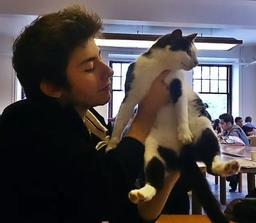You will remember what copulae are from previous lessons, but here's a quick reminder; in Turkish copulae are used either to predicate nominals, or they are added to already tensed verbs to extend meaning.
In this lesson you will learn about the conditional copula -(y)sE. The conditional copula always creates a conditional sentence. Let's see an example of it when it predicates a nominal:
| If that car is new | O araba yeniyse |
Using conditional copula always spawns a subclause, it can never be a complete sentence on its own. Let's complete the sentence:
| If that car is new, it must be expensive. | O araba yeniyse pahalı olmalı. |
Like the other copulae, conditional copula can combine with other tense aspect markers, as well as the past (which you have seen) and evidential copula (which you are yet to see). Let's see an example:
| Öğretmen sınıfa girdiyse | If the teacher entered the classroom |
Now let's complete it:
| Öğretmen sınıfa girdiyse sessiz olalım. | If the teacher entered the classroom, let's be silent. |
The meaning added by -(y)sE is very predictable. It is as if you add an 'if' to the beginning of the sentence, however since Turkish is suffixing, you add it to the end!
There is just one combination you should be specifically aware of, and that is aorist plus conditional copula. While we in general use the aorist for recurrent events, when combined with conditional copula it can mean two things. First is the expected meaning, a recurring event (implied by aorist) and a conditionality (implied by the copula). Let's see an example:
| Eylem balık yerse, midesi bulanır. | If Eylem eats fish, she gets nauseous. |
The aorist is in italics. We get that everytime Eylem eats fish, she gets nauseous, maybe she's allergic. However there's a second interpretation to the same sentence:
| Eylem balık yerse, midesi bulanır. | If Eylem eats fish, she will get nauseous. |
In this interpretation we get that this is a one time event. And the two interpretations have exactly the same form. Therefore it's ambiguous but most of the time we get the differentiation from the context. In fact, this usage of aorist plus conditional is very common and never have I experienced a moment of ambigiuity during my daily interactions!
An aorist + conditional copula construction is usually followed up by a verb that also has aorist. For example:
| Spor yaparsan, daha sağlıklı olursun. | If you exercise, you will be healthier. |
Even though the meaning of the main clause is future (you will be healthier), we use aorist. You will learn about the intricacies of the conditional in later lessons. With practice, you will get used to it quite easily.
| Conjugation Table | Singular | Plural |
|---|---|---|
| First person | yap-ar-sa-m | yap-ar-sa-k |
| Second person | yap-ar-sa-n | yap-ar-sa-nız |
| Third person | yap-ar-sa | yap-ar-lar-sa |
Notice that in the third person plural, the person marker comes before the conditional copula unlike others.

